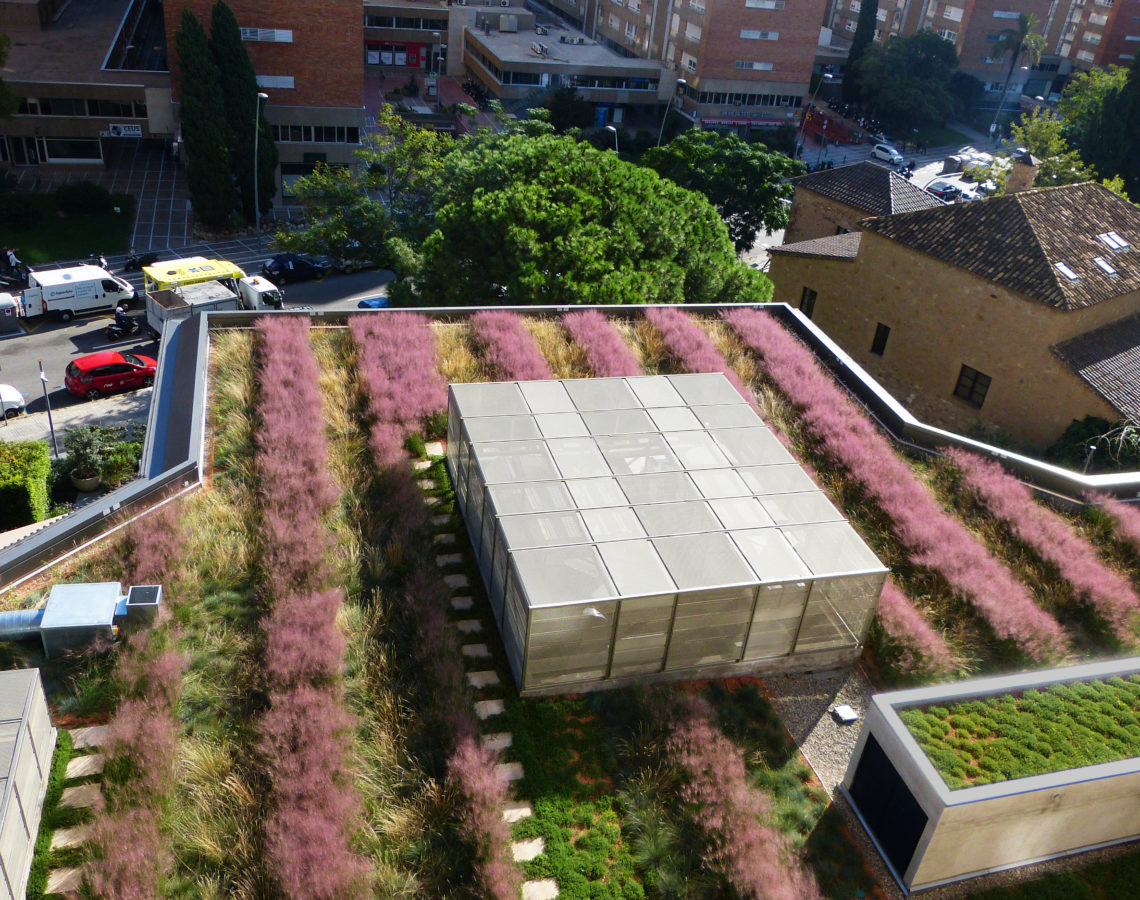Advantages of green roof buildings

Guest Post by: Jaume Ferret, www.etposemverda.com
In our mediterranean cities and towns, most of the roofs of the buildings are constructed from ceramic materials (tiles, concrete,…) or metallic, that protect people, the building itself and its contents, from the different meteo elements (rain, sun, wind…), In addition, the roofs can accommodate different functional elements such as antennas, air conditioning appliances or solar panels.
But these human constructions are not environmentally neutral. And I do not mean only energy consumption or the type of materials with which they are manufactured! They have a great impact, both for the environmental cost of opportunity (space that ceases to be natural) and directly, with effects on the environment:
- Increased speed of rain water runoff (rainwater is not absorbed by the soil);
- Heath island effect (the building materials absorb and retain the thermal energy of the sun);
- Decrease in biodiversity (due to the destruction of habitats),
- Absence of CO2 capture capacity (besides the emissions generated by the building itself).
All of these effects are clearly seen in the Mediterranean cities and towns, with dense urban areas spaces. This dense urbanising is more efficient in environmental terms than the disperse urbanisation we see in many Anglo-Saxon cities: land occupation is much lower, reduces communication and supply infrastructures and generates less energy consumption and resources. At the same time, it has a big disavantatge: it concentrates all the environmental pressure of the built environment in a much more reduced space, also densely populated. So the inhabitants of these cities suffer more than the effects of the heath island (temperature above 5-8ºC compared to the periurban surroundings), the lack of green spaces and the rise of atmospheric (and sound) pollution, and altogether, the quality of life for the inhabitants is reduced.
In fact, a long-term study by ISGlobal (link in catalan) in Barcelona has recently shown that access to a plant space less than 500 metreshousing, reduces premature mortality.
Therefore, a great challenge appears: to reconcile the positive effects of the dense cities with the increase of the quality of life and environment. Eliminating existing buildings to create more green spaces (parks and gardens) has a very high direct economic cost, also considering the effect to part of the advantages of the dense cities.
The title of this article already gives a clue to the solution I propose: to transform the current “hard” roofs, which are under-utilized cement deserts (if not directly abandoned) in gardens, orchards or naturalized spaces. Only in the city of Barcelona, it is estimated that between 60/70% of the roofs of the buildings are susceptible to be transformed into green roofs. And this transformation would bring great advantages at the level of:
- City (temperature, air quality, more natural environment),
- Building (roof more waterproofed and more useful life, greater thermal and acoustic insulation, and increased value of property);
- People: Better quality of life and access to the self-consumption of vegetables, because otherwise, we associate a house with garden with wellness?
I will not add more, You can check (in catalan/spanish) this guide to green roofs and rooftops of Barcelona City Council, or this book on the renaturalisation of the city of Diputació de Barcelona.
And already to finish, at a global level, there is an advantage that very often goes unnoticed: turning the “hard” roofs into “green” decks has no opportunity cost! We should not give up anything we already have! And we will have an urban environment more like what we now have with the confinement, but without being confined, enjoying it!
Jaume Ferret, www.etposemverda.com
Photos: www.etposemverda.com from Etposemverda; video Barcelona City Council



